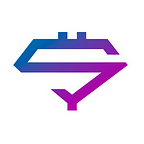Zilliqa: A Sharding-Based Public Blockchain
Disclaimer: the cryptocurrency industry is extremely volatile and unpredictable. Superorder isn’t responsible for any consequences of your investments. Always do your own research before making a deal.
Continuing the research dedicated to blockchain 3.0 projects, we’re ready to discuss Zilliqa (ZIL). Basically, the platform isn’t really innovative or unusual. It’s a traditional development platform with the support of smart contracts and DApps. It wants to solve the main scalability problem typical for older blockchains like Bitcoin or Ethereum. However, Zilliqa developers deliver a few interesting features. Let’s talk about them.
Also, you may be interested in a big comparison of five the best platforms focused on the interoperability of blockchains: Aion, Cosmo, ICON, Polkadot, and Wanchain.
Zilliqa Basics
The project a public blockchain (means, it’s open for everybody who wants to become a developer and/or miner) based on a sharding concept. Put simply, the technology provides for creating several side rows connected to the main chain. Each shard can verify transactions independently so there’s no need in involving all existing blocks. As a result, Zilliqa reaches way higher speed and scalability when compared with Ethereum.
Developers claim that the system is perfect for high-throughput apps and tasks. Surprisingly, they don’t try to cover all at once. Instead, Zilliqa focuses on scalability, security, and efficient mining so potential participants (apps’ creators and common users) can clearly see the goals and plans. The team makes things transparent and understandable even for crypto newcomers. That’s cool but there are also some drawbacks.
Zilliqa History and Key Events
At the official website, you can find a simple roadmap with the most important milestones:
- June 2017: the project started
- September 2017: internal testnet launched.
- December 2017: Scilla released.
- March 2018: public testnet v1.0 launched.
- June 2018: public testnet v2.0 launched.
- January 2019: the mainnet launched.
Still, the most important event occurred in June 2019. The project officially added smart contracts to its mainnet allowing developers to join and work with the system using its native language called Scilla. Further, Zilliqa devs plan to introduce the feature of the token swap, to add Anchor DApps (actually, nobody knows what’s it), to improve the code, and to make it suitable for high-level languages.
Zilliqa Major Features
- Sharding. Zilliqa utilizes blockchain with connected shards aka rows of blocks placed aside of the main chain. These rows verify transactions without involving other shards. As a result, the entire system features way higher scalability based on the ideas of parallel consensus.
- Scilla. The main native language of Zilliqa provides for wide options related to smart contracts writing and deployment. Scilla focuses on the apps’ security. Authors also feature a standalone Savant IDE, a JS library, and JSON-RPC APIs. You can also check the language’s page on GitHub.
- Modified PoW. According to developers, the platform works under Proof-of-Work protocols with significant changes. Computing power is needed for transactions’ verification only so Zilliqa comes with a lower energy footprint. As well, this PoW concept features distributed rewards for all miners.
- DApps. Obviously, the development ecosystem must include options for, um, developers. Everybody can access Zilliqa to create a decentralized application via Scilla. Later, we hope to see next-gen DApps with zero fees, round-the-clock interoperability, and so on.
Zilliqa Advantages
- High scalability. During public testing, the project showed pretty impressive results. The testnet reached 2,828 transactions per second with 6 active shards. Mainnet results are not as sensational, though.
- Eco-friendly mining. With the new PoW approach, Zilliqa requires less energy to maintain its blockchain. Miners have to run their devices for a few minutes in each global cycle that lasts for 1–3 hours.
- Reliability and security. Scilla and, generally, the entire system focuses on safe development. Thanks to its functional nature and the COQ assistance software, the language provides for different checks and reviews of smart contracts.
Zilliqa Drawbacks
- Lack of storage space. The problem with Zilliqa’s sharding is that it stands for delegating of transaction verifications only. Shards can’t store data so each block in the main chain has to include the entire network’s copy.
- Relatively inexperienced team. Only academicians and businessmen are behind this project. They don’t look like professional developers. However, they have successfully launched the mainnet and deployed smart contracts.
- New language. Scilla is promising and engaging but it’s not as well-known as Solidity or other popular languages. To begin creating DApps, developers will have to learn this completely new tool.
Zilliqa Price, Trading & Investing Tips
Among the most interesting blockchain 3.0 projects (excluding innovative and still developed interoperable platforms), Zilliqa is the least successful coin. ZIL token holds the 44th place now. It costs a bit more than $0.227 and has a total capitalization of almost $200 million with the historic record of $1 billion.
Due to recent news about smart contracts, Zilliqa increased in price but now it features a series of highs and lows that may be profitable for day trading crypto. Active market players can watch for the rate jumps to catch the next wave. Remember to put Stop Losses or Trailing Stops during day trading.
Subscribe to our Facebook and Twitter pages where we also announce interesting stuff. Surely, check out our beloved API trading terminal Superorder where you also can trade Zilliqa. Cheers!
